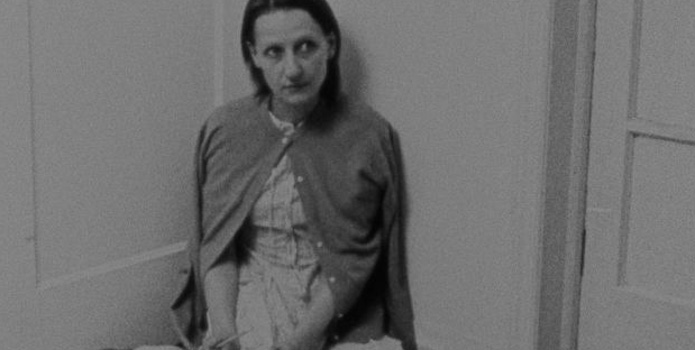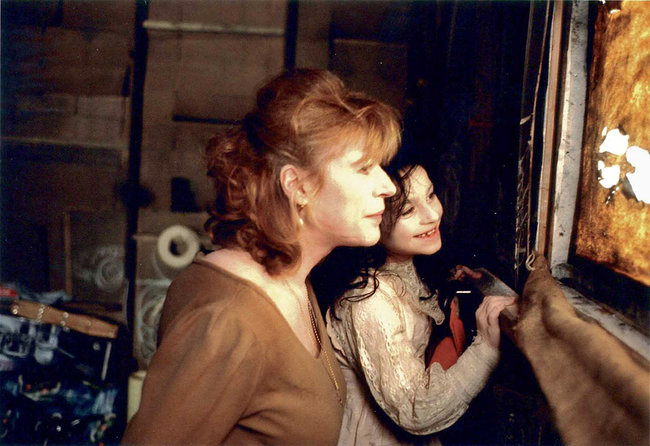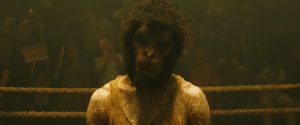Reviews include Irena’s Vow, The Beast, and Before I Change My Mind.
Counter Careerism: The Films of Sara Driver
July 24, 2014
By: José Teodoro

“Careers are weird.” It’s something I heard Sandra Bernhard say in a recent interview, a banal enough statement until you actually begin applying it to the nonlinear careers of certain individual artists—most especially cinema artists, and, amongst those, most especially women, and, amongst those women, most especially directors. Over the last 34 years, Sara Driver has amassed credits as actor, writer and producer, but take a look at any of her four films as director and you won’t have any doubts as to her métier. She directed only four films, and only two at feature-length, yet what a sensibility: maundering yet succinct, controlled but never severe, drawn to shadowy campfire outskirts of experience yet resolutely good humoured. And then there’s Driver’s dizzying list of collaborators, among them: author Luc Sante; photographer Nan Goldin; musician-composers Joe Strummer, Marianne Faithful and Kathleen Brennan; actors Alfred Molina, Steve Buscemi and Seymour Cassel; cinematographer Robby Müller; and, of course, Driver’s long-time companion Jim Jarmusch. This hipster dream garden community speaks volumes, given that in independent cinema collaboration is sensibility: the enlisting of various foremen to construct the sandcastle of a singular work.
Following retrospectives in Buenos Aires, Thessaloniki and New York, TIFF Cinematheque is recognizing Driver’s singular sandcastle in a series entitled “Magic, Realism.” The occasion for all the retrospection is the restoration of Driver’s mid-length debut You Are Not I (1981), long thought lost until a print was discovered in the Tangier apartment of the late Paul Bowles, author of the wondrously eerie short story upon which the film is based (though You Are Not I could also be viewed as a descendent of Persona [1966] and 3 Women [1977], in that it uses narrative tools inherent to cinema to convey a sense of psychic transference between women). The film follows Ethel (Suzanne Fletcher), a psychiatric patient who escapes her hospital in the wake of a catastrophic pile-up on a nearby motorway. Ethel is caught placing stones in the mouths of the dead crash victims, is mistaken for a relative in shock, and subsequently escorted to the home of her sister. When orderlies arrive to take our hollow-eyed anti-heroine back to hospital, she shoves a stone into her sister’s mouth and an exchange occurs: the sister, now in hysterics, is taken away instead. The spectral, wintry atmospherics of You Are Not I recall Carnival of Souls (1962), or even Night of the Living Dead (1968), but among Driver’s distinctions, alluded to in the title of this series, is her refusal to surrender to conventions of strict realism or fantasy. You Are Not I exists in its own twilit liminal space, founded in, but not tethered to, a recognizable, detail-laden reality.

The sensibility blooming in You Are Not I flourishes in Driver’s features. Driver has professed admiration for the films of Jacques Tournier, and Sleepwalk (1986) is to some extent an homage to Tournier’s collaborations with legendary producer-auteur Val Lewton, complete with a strangely hushed nocturnal New York, a “night walk” sequence, and a sense of gradual oneiric slippage. Nicole (Fletcher) is a young single mother hired to translate a manuscript of cryptic Chinese verse, a task that seems to release waves of inexplicable entropy: her child is accidentally kidnapped, her roommate suddenly goes bald, and disembodied voices and possessed machinery start to follow her around. As with You Are Not I, Jarmusch is behind the camera, and the visual aesthetic is closest to the neo-noir, Edward Hopper-styled schemes of Aki Kaurismaki, luminous colour imagery lit for black and white. The editing favours cross-cutting between multiple scenes, even if little or nothing is changing in those scenes. The story, co-conceived with Kathleen Brennan (spouse and frequent collaborator of Tom Waits), is riddled with deadpan humour and labyrinthine mysteries that eschew resolution. When Pigs Fly (1993), in keeping with Joe Strummer’s Celtic score, is more melancholy and whimsical: a folksy tale of ghostly revenge in which a narcoleptic bebop musician (Alfred Molina) becomes acquainted with a pair of phantoms doomed to haunt a rocking chair. (One of those phantoms is Marianne Faithful, who gets to sing “Danny Boy” in her regal growl). When Pigs Fly was shot by Robby Müller in the same East German village where Murnau shot Nosferatu (1922), but the whole thing feels a lot closer in spirit to Topper (1937).

Driver hasn’t directed a film in 20 years—The Bowery: Spring 1994 (1994) is a vibrant, eccentricity loving ten-minute portrait of the titular Manhattan neighbourhood, but hardly gives adequate closure to this fascinating body of work. To be sure, Driver is still active. She’s credited with the story for Jarmusch’s Broken Flowers (2005), prompting one to reconsider the flip assertion that the film be dismissed as the manifestation of the director’s “male menopause” (which strikes me as offensive in at least two ways).
I began writing this in praise of “weird” careers, but the truth is I want more from Driver. I want to see how her handmade approach to the fantastical translates in the digital era. I want to know how these stories of the everyday uncanny can reflect the accumulated experience of an artist in her 50s, one with a scholarly knowledge of film history, a penchant for assembling dynamite creative confederacies, and an irrepressibly idiosyncratic approach to storytelling. Luc Sante once described Driver’s films as “doorways into the unknown.” Here’s hoping those doors remain open.



